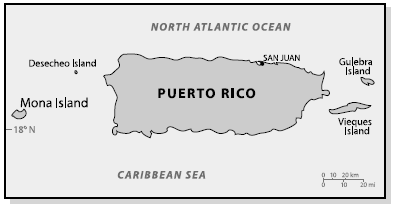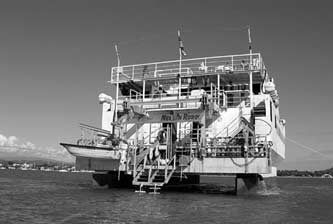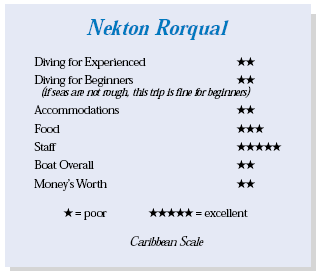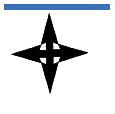The Nekton Rorqual; Mona Island, Puerto RicoContents of this Issue: The Nekton Rorqual; Mona Island, Puerto Rico Three Perish in Red Sea Live-Aboard Explosion The New Wave of Dive Computers Editorial Office: Ben Davison Publisher and Editor Undercurrent 3020 Bridgeway, Suite 102 Sausalito, CA 94965 sounds too good to be true from the April, 2004 issue of Undercurrent
Dear Fellow Diver, Called the "Galapagos of the Caribbean" by some, three small islands off Puerto Rico's coast are now being visited by the Nekton Rorqual. My last trip to the real Galapagos Islands was packed with adrenaline, so to find sharks and turtles along with indigenous land species at the islands of Mona, Desecheo, and Monita sounded too good to be true. Still, I bought into the Nekton Rorqual brochure regaling "expansive underwater caves, fallen house-size boulders carved from the island, and intense fish populations." I could handle "the advanced diving and swimming to and from the wall below the wave zone to avoid getting caught up in the washing machine working on full spin above." And to see numerous turtles "including the endangered hawksbill and leatherback," would be exciting. Imagine massive leatherbacks! The boxy Rorqual, (80 feet long by 40 feet high and wide, perched on 10-foot pontoons) may be designed to provide stability and comfort, but it was one ugly boat, and it took me two days to learn to navigate its decks. The boat has only a narrow passage on the bow and stern; the latter has oily "stairs to nowhere," hydraulically lowering and raising a narrow dive deck that runs the width of the stern with two stairways leading to the water. Oily, because they tattooed my dive skins. They assigned each diver a steel 95 tank, with a
cubby below. One diver found the tank too heavy and opted
for an aluminum 3,000. Entering the water required a giant
stride with a 3-meter drop, while photographers were
requested to exit down the stairs. The divemasters checked
everyone's air and helped divers in and out of the water.
Ladder-type stairs below the surface were climbable with
fins but tenuous when swinging in a current. After hanging on the deco-bar at 15 feet, it was about a 10-foot ascent to the Christmas tree ladder extending into the water. Once I climbed up the ladder by swinging my fins to the next rung, I then climbed aboard the twin stairwells walking backward -- that's the recommended approach on the Rorqual -- up to the dive deck and my seat. After removing my tank and disconnecting my regulator, I proceeded up more stairs to the narrow stern passageway where there were two hot showers. By the time I got under the warm water, I was freezing. Then I froze again while climbing the stairs to the salon deck to retrieve a warm towel. But wait: I forgot to sign in from the dive on the lower deck. After retracing my steps on several occasions, I learned to yell down to someone still below. If there was a light or lock in the public head next to the showers, I never found it, so while I struggled in the dark for a post dive pee, other divers frequently stormed in. Men don't mind; ladies said they did. It was another flight of stairs to the sundeck where I filled out my log or put on my suit before a dive and occasionally warmed up in the hot tub. It's good exercise, four or five times a day, but some divers didn't appreciate it. Making the five advertised dives a day was tough. The first dive was 8 a.m., "mas or menos," which meant completing two dives before the dive deck was roped off for lunch at 11:45. So I limited dives to about 40 minutes to get in proper surface intervals. After two morning dives in one location, the boat moved for two more, opening the deck at 2 p.m., then closing it promptly at 5:45 p.m. Some enthusiasts who didn't care whether their food overcooked on the steam buffet returned to the boat late. They were reprimanded. After dinner, one could take a night dive, but few did. The crew did attach Cyalume light sticks to the hang tank and tag line, placed a strobe on the bowline, and asked us to carry a spare light between buddies. There would always be a divemaster on the dive deck and one on upper deck. Few people made night dives because of the repetition of the site, current conditions, or the late hour of the dive.
We spent our first diving day at Isla Desecheo. The mountain-like island, inhabited by monkeys, red-footed boobies, and frigate birds, has a lowlying shoreline with slopes rising 715 feet. Located 12 miles from Mayaquez, there are several protected coves where, if time permits (I think this is wishful thinking), it is possible to kayak (the boat carries several). The lee side offers shallow patch reefs with many sponges, especially awesome barrel sponges. The U.S. Navy previously used Desecheo as a bombing range, and at Bomber Anchor Valley I saw several unexploded bombs and a 200-year-old anchor.Surge gently rocked me sideways, sometimes kicking up sandy areas and reducing visibility. While there were plenty of small tropicals, an Atlantic barracuda and a bonito were the only unusual thrills. The spur and groove terrain had gullies. Occasionally day boats visit from the city of Rincon. Unable to fix the line to the next mooring, the Rorqual returned to Bomber Alley for our second dive. Viz varied from 60 to 100 feet (water temp was 78F), and divemasters determined current strength by eyeing the hang tank. However, it was not unusual to find the current at depth flowing in the opposite direction. (While the seas were generally calm, we had a 1-2 knot current on several dives; my buddy aborted a dive when the surface current whammed her against the boat while she was using the granny line). Captain Nelson's briefings included good terrain descriptions, compass headings, and potential unique critter sightings -- that didn't occur. After a day boat left, we moved to Green Plate Special, probably named for the numerous flamingo tongues munching on seafans. I saw more shells here than I've seen in the entire Caribbean, but the soap fish and sharptail and snake eels we were told to look for had fled for greener pastures. Many beautiful sponges had hard coral encrusted on them. And where were the schooling fish? The reefs were beautiful, and the small fish were nice, but the pelagics, leatherbacks, and loggerheads -- the big stuff -- were missing. When the Rorqual is full with 34 divers, dives are done in shifts. Even with only 13 (we were all Americans or Canadians), I still had to wait my turn to jump into the water, because there wasn't space enough in the aisles for two divers to pass wearing tanks. While the Rorqual advertises this as an advanced diver trip (I didn't notice any novices), there were rules. If one buddy ran low on air, both had to return to the boat. No air descents below 130 feet, 110 feet on Nitrox. And the crew reserved the right to check computers. We were required to take a three-minute safety stop on a 3-foot-wide hang bar. We were advised to use the tag line if we missed the boat; a battered skiff trailing the boat was used to retrieve anyone drifting. The mostly under-30, alldivemaster crew worked their hearts out. If we wanted to dive with one of the three divemasters on duty each day, we had to request it. The crew rotates daily tasks, so tank fills and blends were inconsistent (housekeeping too!). And turnover rate is high; I suspect that having contracts not even migrants should put up with -- having to put in a free apprentice week, buying their own Nekton T-shirts and shorts, and paying for Nitrox -- might contribute. One crew member, Jeff Sandman, was collecting data for DAN's Project Dive Exploration, to correlate age, medical issues, prescription medication used, and dive profiles. Volunteers wore a monitoring device. I found my dive patterns, graphed on a computer at the end of the week, very interesting, especially the spikes of quick ascents at depth that exceeded 30 feet per minute. After three dives at Desecheo, we motored 36 miles at night to Mona, where the 700-foot pinnacle, which glows red in the setting sun, is thinly covered with trees. A usual visit to Mona with park rangers to see red-footed boobies, 4-foot iguanas, and "the world's largest marine-originated cave system" was canceled. It was wild boar and goat bow-and-arrow hunting season. Mona diving was better than Desecheco. An awesome wall named Bubbles and
Blossom leveled into a plateau of spurs and grooves. I was happy to see a few
bristleworms and cleaner shrimp, more excited to see a channel clinging crab with a huge claw and an Alaskan-size redridged
clinging crab in a crevice.
The smaller island of Monito is four miles south of Mona and where we did our first "live dive" (the Rorqual word for drift diving). Live dives are determined by the inability of Nekton's skuzzy looking "research" vessel, the Cachalot, to put a mooring stanchion in place to prevent currents from swinging the boat onto the island. Captain Nelson said that instead of dinghies picking us up where we surfaced, we'd return to the Rorqual. When all of us were geared up, the crew yelled, "dive, dive, dive," and we jumped like skydivers, one after another. With the bellowing Rorqual motoring overhead, we followed the divemaster, who swam with a float ball on a reel, and were required to stay tight with the group and our buddies. After 40 minutes we surfaced in unison, making a 15-foot, 3-minute, crowded safety stop in blue water. Captain Nelson navigated the big ass boat precisely, and when instructed we proceeded to the boat, four at a time, one pair holding the ladder while the other two climbed up. Nelson had told us to enjoy the surge and drift with the current. But on the first dive the divemaster swam like hell against a one-knot current, causing some divers to overexert and run low on air. The dive was later referred to by the group as an "anti-drift" dive. As we swam along the island wall between fallen boulders under the crashing surf, I saw a sizable green turtle and a curious 6- foot reef shark (the only one of the week). Responding to our complaints, the next dive at Turtle Cove was led by a different divemaster, one who drifted with the current, which allowed us to enjoy the boulder strewn terrain and swim-through rock passages. I didn't see the expected turtles, nor the described area of dense black coral at 60 feet. I did see large barrel sponges with turtle bites. We did other live dives at Rainbow and Andrew's walls on Monito before diving on our own again. Heading back to Mona, we spent the rest of the week at Rainbow Wall, Southern Pride, and the spur and groove channels of Yuletide. On the first dive I saw a nurse shark, hawksbill turtle, and yellow ray. On another live dive, at a site protected by a small barrier reef, we spread out to swim between boulders, through channels, and under overhangs. The surge was up and down, forward and backward. As I searched the sand for yellowheaded jawfish, the current created a Sahara-like sandstorm. I did see a lot of reef fish but nothing unusual or new. On the entire trip I saw a few moray eels, but only one nurse shark and one lobster. Of course, one must eat to keep fueled, and while buffet meals were hearty, they were uncreative. One night it was Italian; lunch might be Mexican food or sandwiches. Most folks passed on the biscuits-and-gravy-with-grits breakfast. Prime rib and barbecued ribs (cooked in the oven) were popular. Meals were heavy on the meat, but there was always an option for vegetarians. Food often came from a can, salad dressings were bottled, and the lettuce was iceberg. Home- baked, packaged cookies were served after the morning dive and a hot appetizer (frozen chicken poppers, eggrolls, or mini-pizzas) in the afternoon. No alcoholic or carbonated beverages are served. Bring your own and store the bottles in their cooler. If you miss this information beforehand, they make a shuttle stop for divers to purchase their drinks before boarding. Each night there was an interesting slide lecture (sponges, reef fish, turtles, and sharks), but the regular 9:30 p.m. presentation was too late for many, so it was occasionally moved before the night dive, making that too late for many. The final evening's presentation was to be a contest of guests' photography, but only one diver used E-6 processing, and the boat had no equipment to read digital images. With the boat less than half full, everyone was given an entire cabin, gratis. Upon arrival, two safety sausages rested on each fish-designed bed covering to welcome divers. At night, a mint lay on each pillow. The cabins are spacious, each with a private bath and new shower. The entryway in each room has a sink, vanity, and draped closet with shelves. Rooms have full-size windows with curtains (which have lost their Velcro so they don't stay closed) and soft, uneven mattresses. While the air-conditioning could be controlled, the vent blew directly onto the bed. The dining room and salon -- with entertainment center -- was spacious. Outlets for charging cameras were inconveniently located below cushioned seats. There was a small galley, and tables for meals lined the walls. The top sundeck had lounge chairs, several tables and chairs, and a hot tub. Green or blue towels were to be kept inside; the warm pink towels offered after each dive were to stay on the deck so as not to "bring microorganisms inside." For having operated only two years, the steel and aluminum Rorqual seemed mighty tired. The green-spot, thin, linoleum-looking carpet is peeling, wrinkled, and stained with bleached spots. The peach walls are marred and chipped. Rust spots were common. The boat was noisy, especially below decks, where pipes banged in the walls. Guests staying in rooms on the salon floor got their wake-up call from the galley or went to sleep listening to music and laughter from the salon. And an intercom -- "Attention Nekton Divers!" -- blasted into the rooms for dives, whale sightings, or just calling a member of the crew to the pilothouse. There was no consideration that someone might be napping. Still, we were asked to walk and close doors quietly. If the bathroom door was left open, it would bang against the room entry door, ricocheting noise down the hall. Our final dive site was La Parguera. The prevailing winds swept the boat 200 yards from the wall -- our first choppy surface conditions with seas of about 3 feet. When the divers heard that we were so far from the wall, most opted to dive in the nondescript terrain under the boat. My buddy and I found the nice wall, which was without much sea life. Because of the disappointment, the Captain decided to do a live dive over the wall. At 82 feet I saw a sizable queen angel nestled in a hole with a green moray -- certainly an odd couple. We could see the village of Bogueron off in the distance, about a 45-minute boat ride before we could head off for an evening on the town -- well, a small colorful village. It was an early morning departure for the airport, as two shuttles drove us down the gridlocked tollway for 2.5 hours to San Juan. Some divers would wait at the airport for as long as four or five hours -- not unlike arrival at the boat, where some had to wait as long as three hours for the pick-up. By now, I suspect you can surmise my feelings about this trip. If my diving were to be in the electrified waters of the real Galapagos, then I could have better tolerated the arrival and departure hassles, mediocre food, strange boat, and rules galore. And that "Galapagos of the Caribbean"? Too good to be true. For what turned out to be rugged Caribbean diving without critter surprises, the Hughes, Aggressor, and Caribbean Explorer boats and Caribbean itineraries are far better options. -- G.S.
|

I want to get all the stories! Tell me how I can become an Undercurrent Online Member and get online access to all the articles of Undercurrent as well as thousands of first hand reports on dive operations world-wide
| Home | Online Members Area | My Account |
Login
|
Join
|
| Travel Index |
Dive Resort & Liveaboard Reviews
|
Featured Reports
|
Recent
Issues
|
Back Issues
|
|
Dive Gear
Index
|
Health/Safety Index
|
Environment & Misc.
Index
|
Seasonal Planner
|
Blogs
|
Free Articles
|
Book Picks
|
News
|
|
Special Offers
|
RSS
|
FAQ
|
About Us
|
Contact Us
|
Links
|
3020 Bridgeway, Ste 102, Sausalito, Ca 94965
All rights reserved.

 The crew took fins and tanks from
those who didn't want to
make the awkward climb with
heavy gear.
The crew took fins and tanks from
those who didn't want to
make the awkward climb with
heavy gear.
 Migrating humpback surface sightings
in the distance became more frequent,
as the whales headed 170 miles northeast
to the Silver Bank (see
Undercurrent July 2003 issue).
Migrating humpback surface sightings
in the distance became more frequent,
as the whales headed 170 miles northeast
to the Silver Bank (see
Undercurrent July 2003 issue). Diver's Compass: My week on the Nekton Rorqual cost $1,575,
including the roundtrip shuttle. ... The Rorqual offered replacement
parts and rental gear, although the camera and video
rentals were "under repair." ... Tips were recommend at 15% to
20%. ... Nitrox, or "geezer gas" as they call it, was an additional
$150. ... The boat departs out of Mayaguez, a port city
on the western coast of the island, a 2.5 hour drive from San
Juan. ... If you're an early arrival at the airport, you wait so
the van driver can pick up everyone. I waited three hours. ... Nekton's description
of a "two-hour picturesque ride" turned out to be almost three hours on a
toll road crammed with traffic. ... A nice touch was a Polaroid photo of everyone
on the bulletin board with our room number, making it easier for the crew and
divers to know who's who. ... Make sure to visit Old San Juan El Morro Fortress
and San Juan Cemetery and wander the narrow streets crammed with tourists shopping
in the many curio-type stores. ... The average temperature year round is 82 F. ...
Luis Munoz Marin International Airport is 1,000 miles southeast of Miami. ... This
is a winter trip for the Nekton Rorqual and is planned for next winter; the Puerto
Rico government is concerned about the moorings they are installing and has stopped
it for the time being; the two parties are discussing the issue.
Diver's Compass: My week on the Nekton Rorqual cost $1,575,
including the roundtrip shuttle. ... The Rorqual offered replacement
parts and rental gear, although the camera and video
rentals were "under repair." ... Tips were recommend at 15% to
20%. ... Nitrox, or "geezer gas" as they call it, was an additional
$150. ... The boat departs out of Mayaguez, a port city
on the western coast of the island, a 2.5 hour drive from San
Juan. ... If you're an early arrival at the airport, you wait so
the van driver can pick up everyone. I waited three hours. ... Nekton's description
of a "two-hour picturesque ride" turned out to be almost three hours on a
toll road crammed with traffic. ... A nice touch was a Polaroid photo of everyone
on the bulletin board with our room number, making it easier for the crew and
divers to know who's who. ... Make sure to visit Old San Juan El Morro Fortress
and San Juan Cemetery and wander the narrow streets crammed with tourists shopping
in the many curio-type stores. ... The average temperature year round is 82 F. ...
Luis Munoz Marin International Airport is 1,000 miles southeast of Miami. ... This
is a winter trip for the Nekton Rorqual and is planned for next winter; the Puerto
Rico government is concerned about the moorings they are installing and has stopped
it for the time being; the two parties are discussing the issue.